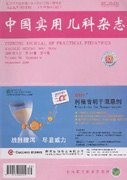|
Clinical and genetic characteristics hyperekplexia:A report of 6 cases
LI Hui,TANG Ze-zhong,XUE Jiao,et al
2020, 35(1):
16-20.
DOI: 10.19538/j.ek2020010606
Objective To analyze the clinical and genetic characteristics of 6 patients with hyperekplexia. Methods Six patients were diagnosed with hyperekplexia in Peking University First Hospital between June 2011 to May 2018. The clinical presentations,course of treatment,electroencephalogram(EEG),cranial magnetic resonance imaging(MRI) and genetic results were analyzed. Results Of the 6 patients,5 were male,and one was female. All the patients presented exaggerated startle reflexes and generalized stiffness in response to unexpected auditory or tactile stimuli in the early neonatal period. Three patients had a transient asphyxia attack,and one had a traumatic fall after exaggerated startle. All the patients showed positive nose-tapping reflex,and four presented inguinal and/or umbilical hernias. EEG showed one was normal and there were atypical discharges or transient abnormality in 5. No obvious abnormalities were found in 4 patients who had undergone cranial MRI. Genetic analysis was performed in all 6 patients:three had heterozygous mutation of GLRA1 gene,two had complex heterozygous mutation of GLRB gene,and one had no gene mutation by whole exon sequencing. All the patients received the treatment of clonazepam. The symptoms of hyperekplexia were completely controlled in one,and only occasional exaggerated startle reflexes existed in 5. All had normal intellectual development,and two patients walked with a similar gait of wide base. One had a clear family history of asphyxia death with the same clinical symptoms. Conclusion All patients with hyperekplexia have typical clinical manifestations and positive nose-tapping reflex. The diagnosis can be made through genetic diagnosis. All the patients have a good response to clonazepam. After early diagnosis through clinical diagnosis and genetic analysis,timely and appropriate treatment are crucial for improving the prognosis of this disease.
|

